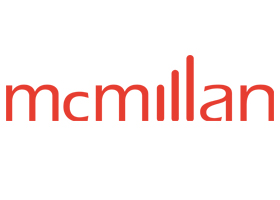


Bring Your Own Device (“BYOD”) Programs: Strategic Considerations to Reconcile Security and Privacy Issues
Bring Your Own Device (“BYOD”) Programs: Strategic Considerations to Reconcile Security and Privacy Issues
A Bring Your Own Device (“BYOD“) program permits employees to use their own personal electronic devices, such as smartphones and tablets, for both business and personal purposes. This arrangement is becoming increasingly popular among Canadian organizations as a strategy to reduce costs and increase both productivity and employee satisfaction. Despite some of the benefits, BYOD arrangements raise serious security and privacy concerns if not properly and securely implemented. Earlier this year, the Office of the Privacy Commissioner of Canada, along with the British Columbia and Alberta Information and Privacy Commissioners (together the “Commissioners“) issued a joint guideline entitled “Is a Bring Your Own Device (BYOD) Program the Right Choice for Your Organization?” (the “BYOD Guideline“). The BYOD Guideline contains important recommendations that would enable organizations to reconcile organizational security concerns with their obligations pursuant to applicable privacy law.
The following highlights some of the recommendations in the BYOD Guideline for developing and implementing a robust BYOD program.
Senior Management Support
The BYOD Guideline considers senior management support critical to the implementation of an appropriate BYOD policy. A fully committed management team is equipped with the resources and authorization necessary for overcoming the procedural challenges and implementation of a risk mitigation strategy.
Conducting a Privacy Impact Assessment (“PIA”) and Threat Risk Assessment (“TRA”)
PIA and TRA are project-based assessments tailored for specific privacy and security needs of different organizations. They identify risks associated with the collection, use, disclosure, storage and retention of personal information. These assessments enable organizations to determine whether a BYOD program effectively reconciles security requirements with privacy obligations.
Developing and Implementing a BYOD-Specific Policy
The BYOD Guideline recommends that organizations develop a BYOD-specific policy that clearly addresses the obligations and expectations of program participants. It is important to widely communicate the policy to internal departments and end-users. A BYOD policy should cover issues such as the responsibilities of the organization and employees, the scope of monitoring, acceptable and unacceptable uses of BYOD devices, security requirements and access requests. Appropriate training should be provided for both users and IT staff to clarify the expectations outlined in the policy.
Mitigating Risks Through Containerization
Containerization is a risk mitigation strategy through which a BYOD device is divided into two containers or compartments: one for storing organizational data and the other for personal information. Organizations are recommended to take advantage of Mobile Device Management (“MDM“) software products to restrict the flow of information between each container.
Addressing Encryption, Software Vulnerabilities and Authentication Process
The BYOD Guideline recommends encryption of the flow of information between BYOD devices and the organization’s network. It is also good practice to communicate the encrypted data via a secure connection such as a Virtual Private Network (“VPN“). Organizations should develop procedures that clearly establish areas of responsibility for software patch management, operating system updates, and protection against vulnerabilities and malicious activities. Additionally, an effective authentication process for BYOD devices and containers is necessary to verify the identity of a user prior to granting access to organizational information.
Formalizing a BYOD Incident Management Process
Organizations should put in place a formal incident management process to address potential security incidents and privacy breaches. The process should include reporting, detection, identification, investigation and timely correction of incidents.
Takeaways for Organizations
Organizations that adopt a BYOD program must develop a carefully constructed policy and procedure that reconciles the benefits of flexibility with the need for security of organizational data and requirements under applicable privacy laws. In the event of a complaint regarding a BYOD program, organizations can expect the Commissioners to consider whether the organization has implemented the recommendations set out in the BYOD Guideline in determining whether the complaint is well-founded.
by Mitch Koczerginski, and Omeed Mousavi, Student-at-Law
A Cautionary Note
The foregoing provides only an overview and does not constitute legal advice. Readers are cautioned against making any decisions based on this material alone. Rather, specific legal advice should be obtained.
© McMillan LLP 2015
Insights (5 Posts)View More
More Than Meets the Eye: The Legal Implications of British Columbia’s Agreement to Recognize Aboriginal Title Over Haida Gwaii
An analysis of legal implications related to the BC Government's agreement with the Haida Nation to recognize Aboriginal title over Haida Gwaii.
Lessons Learned from the TTC’s Ransomware Attack
Lessons learned from the recent investigation by the Ontario IPC into the effectiveness of the TTC's cybersecurity measures and ransomware attack response
Don’t Get Caught by Canada’s Patent Novelty Grace-Period
The key difference between Canada and other jurisdictions like the United States when relying on the grace-period for inventor disclosures.
Shifting Gears – Canada to Consider New Motor Vehicle Equipment Regulations to Help Prevent Auto Theft
Transport Canada announces plan to update safety standards to combat auto theft.
Budget 2024: Legislative Changes of Note for Investment Funds
In Budget 2024, the Government acknowledges that the restrictions placed on the property that may be held by registered plans have become unduly complex.
Get updates delivered right to your inbox. You can unsubscribe at any time.






